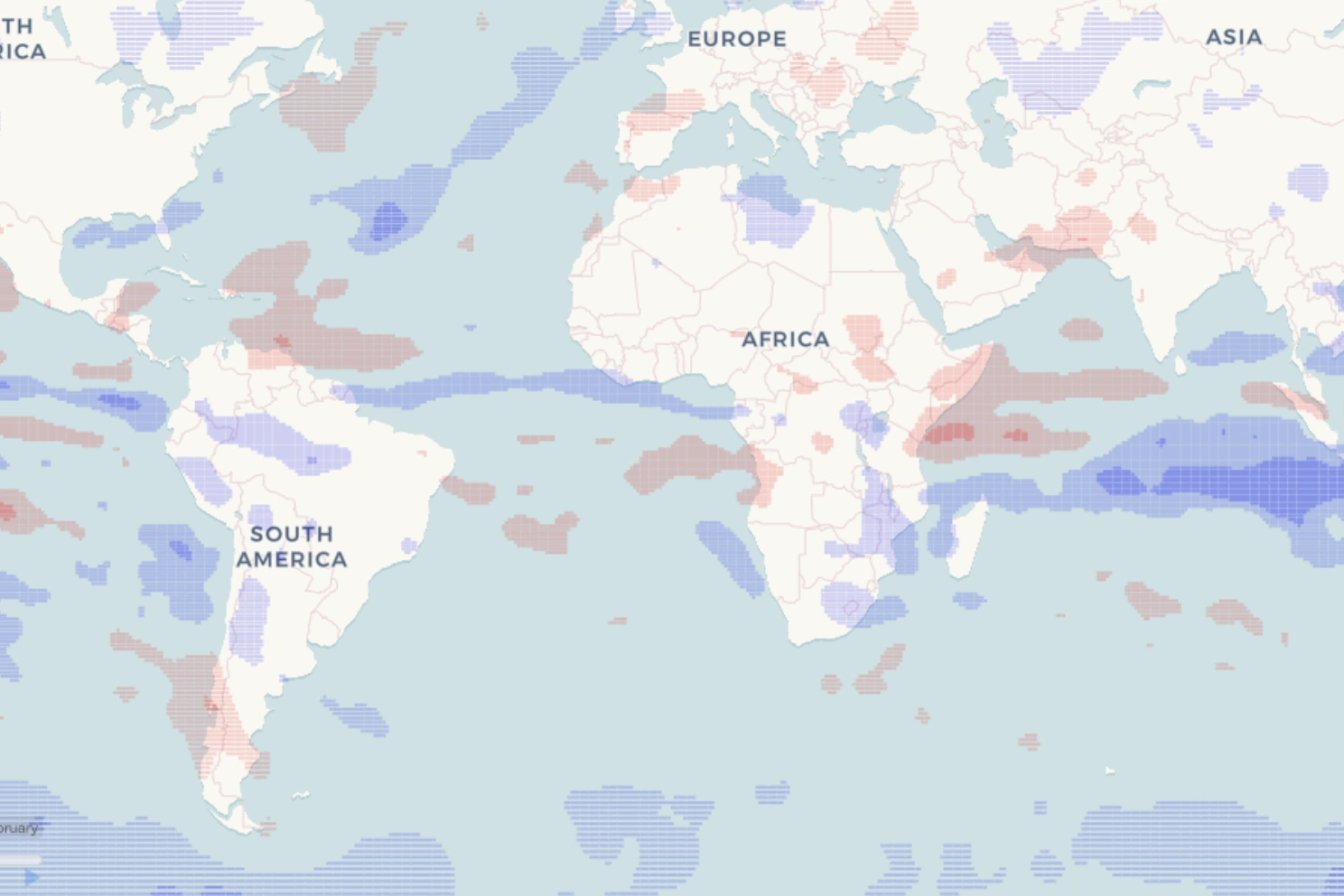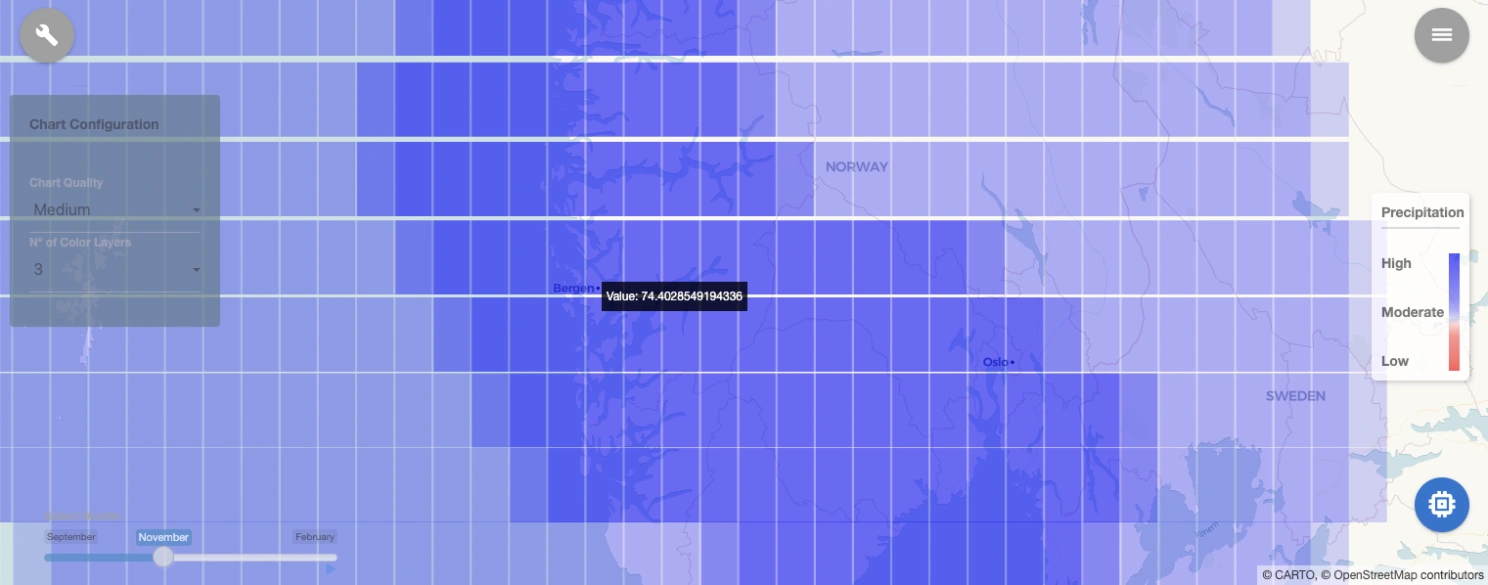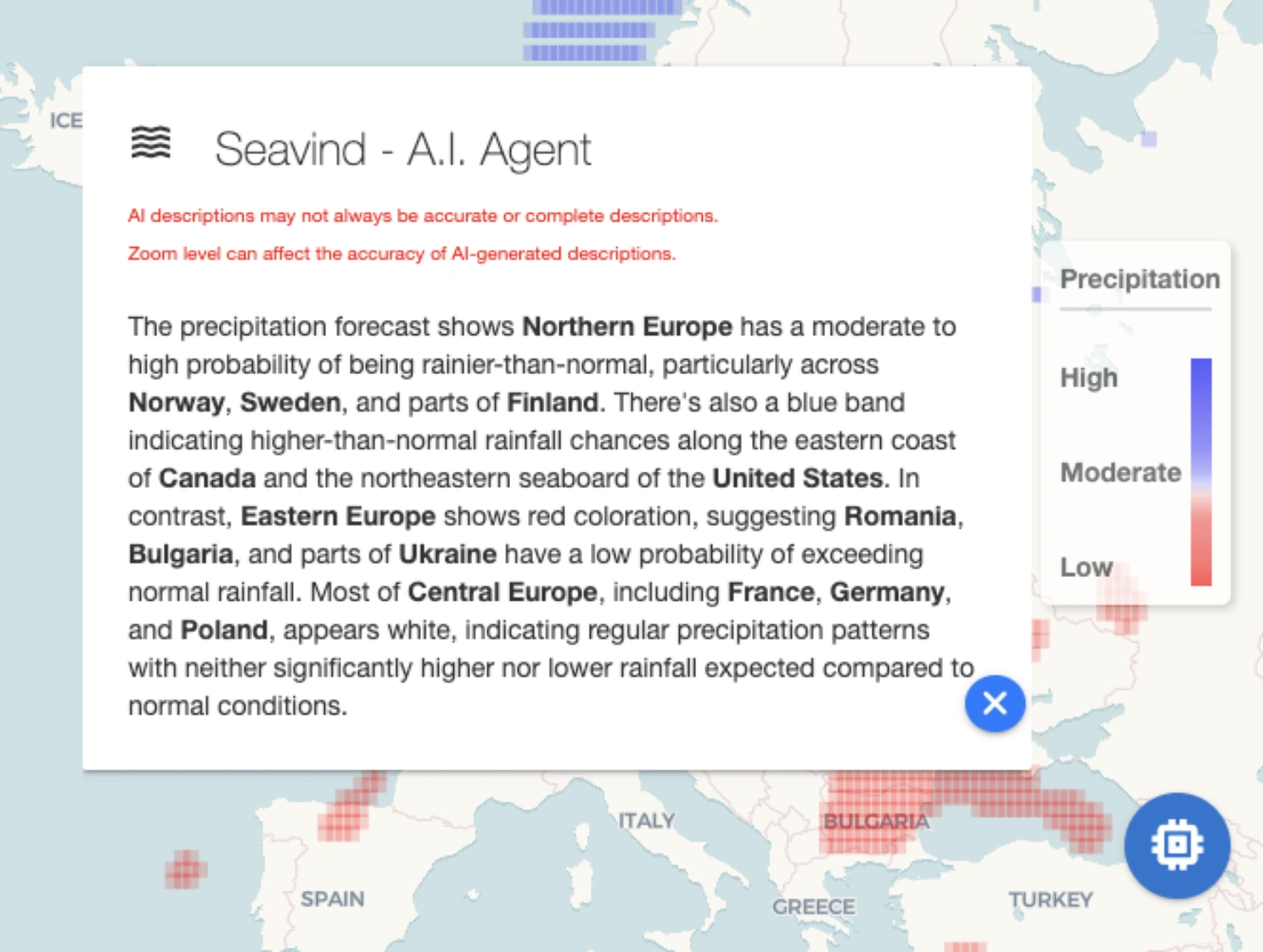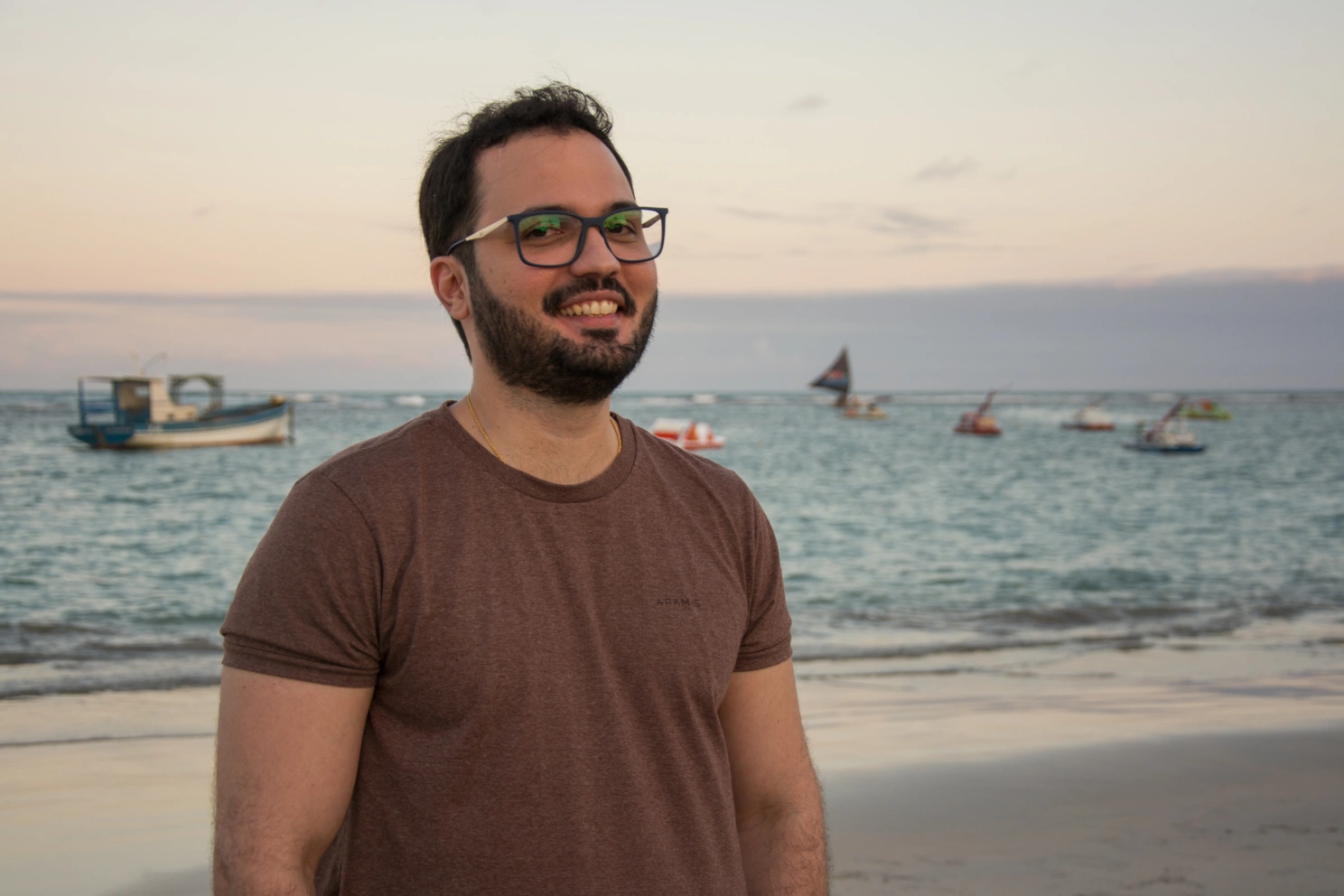Bringing Climate Models to Everyone
How AI is making complex data understandable
Publisert 30. September 2025
Written by Thea Svensson

Screenshot of the NorCPM AI-app.
Climate models can be a challenge to understand, especially for those who don’t have an education in or work with climate science. So, how do you present findings to those who could use the information, but can’t decipher the complicated data from climate models?
- Usually when you have these models, they can be quite complicated to understand. Especially if you just look at something static like a picture image of the output, says Eurico Noleto-Filho, a postdoc with the University of Bergen and the Bjerknes Center.
- Instead, the new app lets us interact with the results and uses AI to help us understand what we are seeing.
Eurico is a biologist with extensive experience in applying artificial intelligence, statistical modelling, and web application development to marine resource management initiatives.
- The idea is that anyone could use it, Eurico continues, whether you are a farmer or a fisherman and so on.
He previously developed the app Shiny4SelfReport, an application for self-reporting data in fisheries, as part of the Triatlas project.
Real-Time Data and Climate Forecasts
The app is connected to a data pipeline, which allows it to update automatically. Every month it will update the results and show predictions six months in advance. Currently the app shows predictions from September 2025 and out February 2026.
There are two modes to choose from on the interactive map, precipitation and temperature. By choosing one a colour-coded overlay shows the different predictions all over the world, and by moving the cursor over the image you can see the specific values for different regions.
Unfortunately, the map shows a 61 % likelihood of increased precipitation for the Bergen-area in September and October, and a 74 % likelihood of increased precipitation in November.

View of the NorCPM AI-App showing the predictions for increased precipitation for the Berge-area in November 2025.
AI-Powered Assistance for Every User
By clicking the AI-icon in the righthand corner you are greeted by the Seavind A.I. Agent who helpfully explains the map for you.
But this is only the beginning, even more features are in the works.
- So, for the next versions, we're probably going to have the side AI helper that will allow you to ask questions. Like a conversation, Eurico explains.
- For example, you can ask what the average temperature for Bergen will be in January and it will explain to you. So, it will get more interactive.
Two more apps are currently being developed, which will work similarly to this one, but with different interfaces. One of the apps will overlay with fisheries data. Something that can become an important tool for those in the fishing industry.
- If the app is predicting that it's going to rain more or be warmer, that affects the ecosystem which in turn affects productivity. I can use the AI to overlay all that information and bring output that might be useful for fishermen and stakeholders, Eurico says.

A screenshot showing the a prediction from the Seavind A.I. Agent.
Tuning AI for Climate Science
The NorCPM-team are responsible for collecting the data for Eurico’s models, who in turn translates them through LLMs (large language models) like ChatGPT and Claude, through a process called RAG (retrieval augmented generation).
- I'm training the AI-models and fine-tuning with data, Eurico says.
- The models don't have these data sets. They are not trained to do these specific things. So, I’m making them a little bit better.
Unlike the LLMs most people are familiar with, the version Eurico uses is called an API (application programming interface), which gives different access than the chat versions.
- I can play with the models and the parameters; I can improve it and adapt it to my needs. So, they will get better with time.

Photo of Eurico Noleto-Filho.
Eurico is a post-doc at the Bjerknes Center and part of the Global Climate research group, and his focus has mostly been on tuna.
- My proposal is related to working specifically with tuna and this type of systems, so we can bridge the gap between tuna-stakeholders and climate models, he explains.
- But we will probably open the apps up to more species to make it a little bit more interesting.